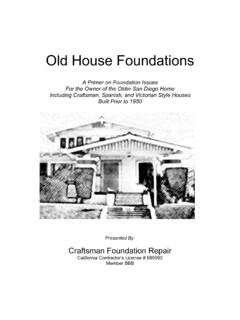Transcription of Health and safety at work - HSE
1 Health and safety at workSummary statistics for Great Britain 2019 Health and safety at workSummary statistics for Great Britain 2019 Costs to BritainIndustriesEuropean comparisonsEnforcementSourcesInjuryIll healthDefinitionspage 2 of 13 Health and safety at workSummary statistics for Great Britain 2019 Key ill Health cases (new or long-standing) in 2018/19 Source: Estimates based on self-reports from the Labour Force survey , people who worked in the last 12 musculoskeletal disorder cases (new or long-standing) in 2018/19 Source: Estimates based on self-reports from the Labour Force survey , people who worked in the last 12 stress, depression or anxiety cases (new or long-standing) in 2018/19 Source: Estimates based on self-reports from the Labour Force survey , people who worked in the last 12 costs of new cases of work-related ill Health in 2017/18, excluding long latency illness such as cancerSource: Estimates based on HSE Costs to Britain ModelKey sustaining a non-fatal injury in 2018/19 Source: Estimates based on self-reports from the Labour Force Survey69,208 Non-fatal injuries to employees reported by employers in 2018/19 Source: RIDDOR147 Fatal injuries to workers in 2018/19 Source: costs of workplace injury i n 2 017/18 Source: Estimates based on HSE Costs to Britain days lost due to work-related ill Health and non-fatal workplace injuries in 2018/19 Source: Estimates based on self-reports from the Labour Force Survey12,000 Lung disease deaths each year estimated to be linked to past exposures at workSource.
2 Counts from death certificates and estimates from epidemiological information2,526 Mesothelioma deaths in 2017, with a similar number of lung cancer deaths linked to past exposures to asbestosSource: Counts from death certificates and estimates from epidemiological costs of work-related injury and new cases of ill Health in 2017/18, excluding long latency illness such as cancerSource: Estimates based on HSE Costs to Britain ModelCosts to BritainIndustriesEuropean comparisonsEnforcementSourcesInjuryKey factsDefinitionspage 3 of 13 Health and safety at workSummary statistics for Great Britain 2019 Ill healthThe rate of self-reported work-related ill Health showed a generally downward trend but has been broadly flat in recent , working days lost per worker due to self-reported work-related illness showed a generally downward trend but has been broadly flat in recent of ill Health based on Labour Force survey (LFS) self-reports and deaths are based on counts from death certificates and estimates from epidemiological find out the story behind the key figures, visit ill health1.
3 4 millionWorkers suffering from work-related ill Health (new or long-standing) in 2018/19497,000 Workers suffering from a new case of work-related ill Health in 2018 days lost due to work-related ill Health in 2018/1913,000 Deaths each year estimated to be linked to past exposure at work, primarily to chemicals or dustNew and long-standing cases of work-related ill Health by t ype, 2018/1919%Other type of illness37%Musculoskeletal disorders44%Stress, depression or anxietyWorking days lost by type of ill Health , 2018/19 17%Other type of illness29%Musculoskeletal disorders54%Stress, depression or anxietyWork-related ill Health per 100,000 workers: new and long-standing600050004000300020001000020 01/02 2018/19 Shaded area represents a 95% confidence intervalNo ill Health data was collected in 2002/03 and 2012/13, represented by a dashed lineCosts to BritainIndustriesEuropean comparisonsEnforcementSourcesInjuryKey factsDefinitionspage 4 of 13 Health and safety at workSummary statistics for Great Britain 2019 Ill healthThe rate of self-reported work-related stress, depression or anxiety was broadly flat but has shown signs of increasing in recent days lost per worker due to self-reported work-related stress, depression or anxiety shows no clear , lack of support, violence.
4 Threats or bullying and changes at work are estimated to be the main causes of work-related stress, depression or anxiety based on 2009/10-2011/12 LFS of work-related stress, depression or anxiety are based on self-reports from the Labour Force survey (LFS).To find out the story behind the key figures, visit ,000 Workers suffering from work-related stress, depression or anxiety (new or long-standing) in 2018/19246,000 Workers suffering from a new case of work-related stress, depression or anxiet y in 2018 millionWorking days lost due to work-related stress, depression or anxiety in 2018/19 Work-related stress, depression or anxietyIndustries with higher than average rates of stress, depression or anxiety, averaged 2016/17 2018/19 All industriesPublic admin/defenceEducationHuman Health and social work 0 500 1000 1500 2000 2500 3000 Rate per 100,000 workersStress, depression or anxiety per 100,000 workers.
5 New and long-standing2000150 0100050002001/02 2018/19 Shaded area represents a 95% confidence intervalNo ill Health data was collected in 2002/03 and 2012/13, represented by a dashed lineCosts to BritainIndustriesEuropean comparisonsEnforcementSourcesInjuryKey factsDefinitionspage 5 of 13 Health and safety at workSummary statistics for Great Britain 2019 Ill healthThe rate of self-reported work-related musculoskeletal disorders showed a generally downward , working days lost per worker due to self-reported work-related musculoskeletal disorders showed a generally downward handling, awkward or tiring positions and keyboard work or repetitive action are estimated to be the main causes of work-related musculoskeletal disorders based on 2009/10-2011/12 LFS of work-related musculoskeletal disorders are based on self-reports from the Labour Force survey (LFS).
6 To find out the story behind the key figures, visit ,000 Workers suffering from work-related musculoskeletal disorders (new or long-standing) in 2018/19138,000 Workers suffering from a new case of work-related musculoskeletal disorder in 2018 millionWorking days lost due to work-related musculoskeletal disorders in 2018/19 Work-related musculoskeletal disordersRate per 100,000 workersIndustries with higher than average rates of musculoskeletal disorders, averaged 2016/17 2018/19 All industriesHuman Health and social workAgriculture, forestry and fishingConstruction0 500 1000 1500 2000 2500 Musculoskeletal disorders per 100,000 workers: new and long-standing25002000150 0100050002001/02 2018/19 Shaded area represents a 95% confidence intervalNo ill Health data was collected in 2002/03 and 2012/13, represented by a dashed lineMusculoskeletal disorders by affected area, 2018/1919%Lower limbs (95,000)40%Back (200,000)41%Upper limbs or neck (203,000)
7 Costs to BritainIndustriesEuropean comparisonsEnforcementSourcesInjuryKey factsDefinitionspage 6 of 13 Health and safety at workSummary statistics for Great Britain 2019 Ill healthThere are projected to be around 2,500 mesothelioma deaths per year for the rest of the were 132 new cases of occupational asthma seen by chest physicians in 2018, similar to the number 10 years lung diseases account for around 12,000 of the 13,000 total deaths estimated to be linked to past exposures at find out the story behind the key figures, visit ,000 Lung disease deaths each year estimated to be linked to past exposures at work2,526 Mesothelioma deaths in 2017, with a similar number of lung cancer deaths linked to past exposures to asbestos18,0 0 0 New cases of breathing or lung problems caused or made worse by work each year on average over the last three years according to self-reported estimates from the Labour Force SurveyOccupational lung diseaseLung diseases contributing to estimated current annual deaths3%Other disease20%Asbestos- related lung cancer20%Mesothelioma23%Non-asbestos related lung cancer33%Chronic obstructive pulmonary disease (COPD)
8 Estimated rate of new cases of occupational asthma relative to 20182008 2009 2010 2011 2012 2013 2014 2015 2016 2017 area represents a 95% confidence intervalrate relative to 2018 Costs to BritainIndustriesEuropean comparisonsEnforcementSourcesIll healthKey factsDefinitionspage 7 of 13 Health and safety at workSummary statistics for Great Britain 2019 InjuryThe rate of fatal injury showed a long-term downward trend but has been broadly flat in recent rate of self-reported non-fatal injury to workers shows a downward rate of non-fatal injury to employees reported by employers shows a downward of non-fatal injuries are based on self-reports from the Labour Force survey (LFS).To find out the story behind the key figures, visit killed at work in 2018/19581,000workers sustaining a non-fatal injury according to self-reports from the Labour Force survey in 2018/196 9, 2 0 8 Employee non-fatal injuries reported by employers under RIDDOR in 2018 millionEstimated working days lost due to non-fatal workplace injuries according to self-reports from the Labour Force survey in 2018/19 Workplace injury20%Non-fatal injuries to employees by most common accident kinds (as reported by employers)
9 , 2018/19 Slips, trips or falls on same levelHandling, lifting or carryingStruck by moving objectActs of violenceFalls from a height10%8%8%29%Estimated self-reported non-fatal injuries, 2018/19138,000 Injuries with over 7 days absence443,000 Injuries with up to 7 days absenceEstimated self-reported workplace non-fatal injury per 100,000 workers50004000300020001000020 0 0/ 01 2018/19 Shaded area represents a 95% confidence intervalIndustriesEuropean comparisonsEnforcementSourcesInjuryIll healthKey factsDefinitionspage 8 of 13 Health and safety at workSummary statistics for Great Britain 2019 Costs to BritainTotal costs include financial costs and human costs. Financial costs cover loss of output, healthcare costs and other costs incurred. Human costs are the monetary valuation given to pain, grief, suffering and loss of estimates of the costs of work-related cancer in Great Britain, visit find out the story behind the key figures, visit costs of work-related injury and new cases of ill Health in 2017/18, excluding long latency illness such as cancer 9.
10 8billionAnnual costs of new cases of work-related ill Health in 2017/18, excluding long latency illness such as cancer costs of workplace injury i n 2 017/18 Estimates based on LabourForce survey and RIDDORfor 2016/17-2018/19 ,and HSE Costs to Britain to BritainCosts to Britain of workplace injury and new cases of work-related ill Health in 2017/18 by:35%Injury type of incident65%Ill Health billionEmployers cost bearer to Britain of workplace injury and new cases of work-related ill Health ( billion, 2017 prices)2018161412108642020 04/ 0 5 2017/18 Shaded area represents a 95% confidence intervalNo costs estimate is available for 2011/12, represented by a dashed lineCosts to BritainEuropean comparisonsEnforcementSourcesInjuryIll healthKey factsDefinitionspage 9 of 13 Health and safety at workSummary statistics for Great Britain 2019 IndustriesIndustries with ill Health rates statistically significantly higher than the rate for all industries were Public administration and defence, Human Health and social work and , forestry and fishing, Construction, Accommodation and food service activities, Wholesale and retail trade (including motor vehicle repair)













